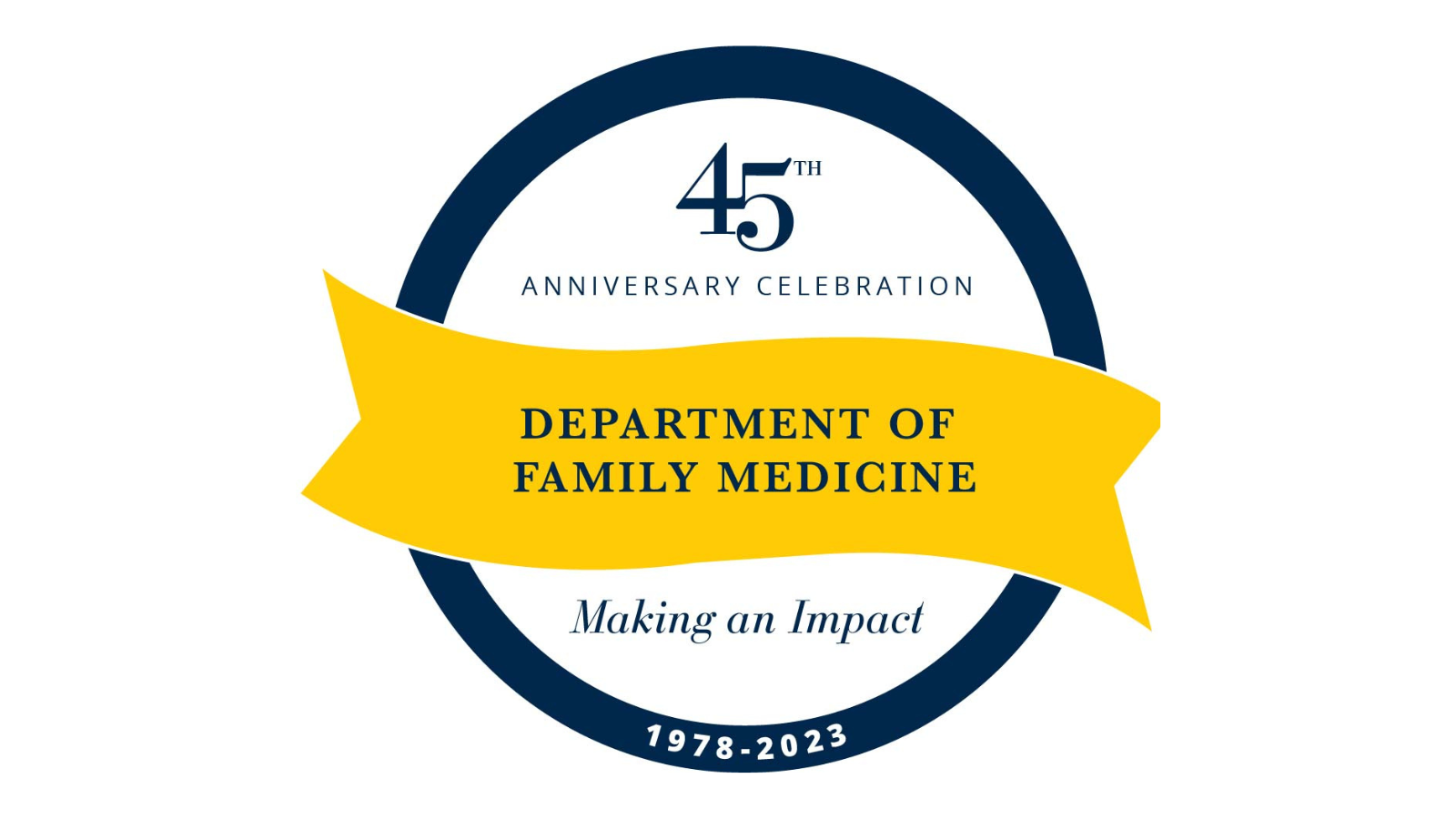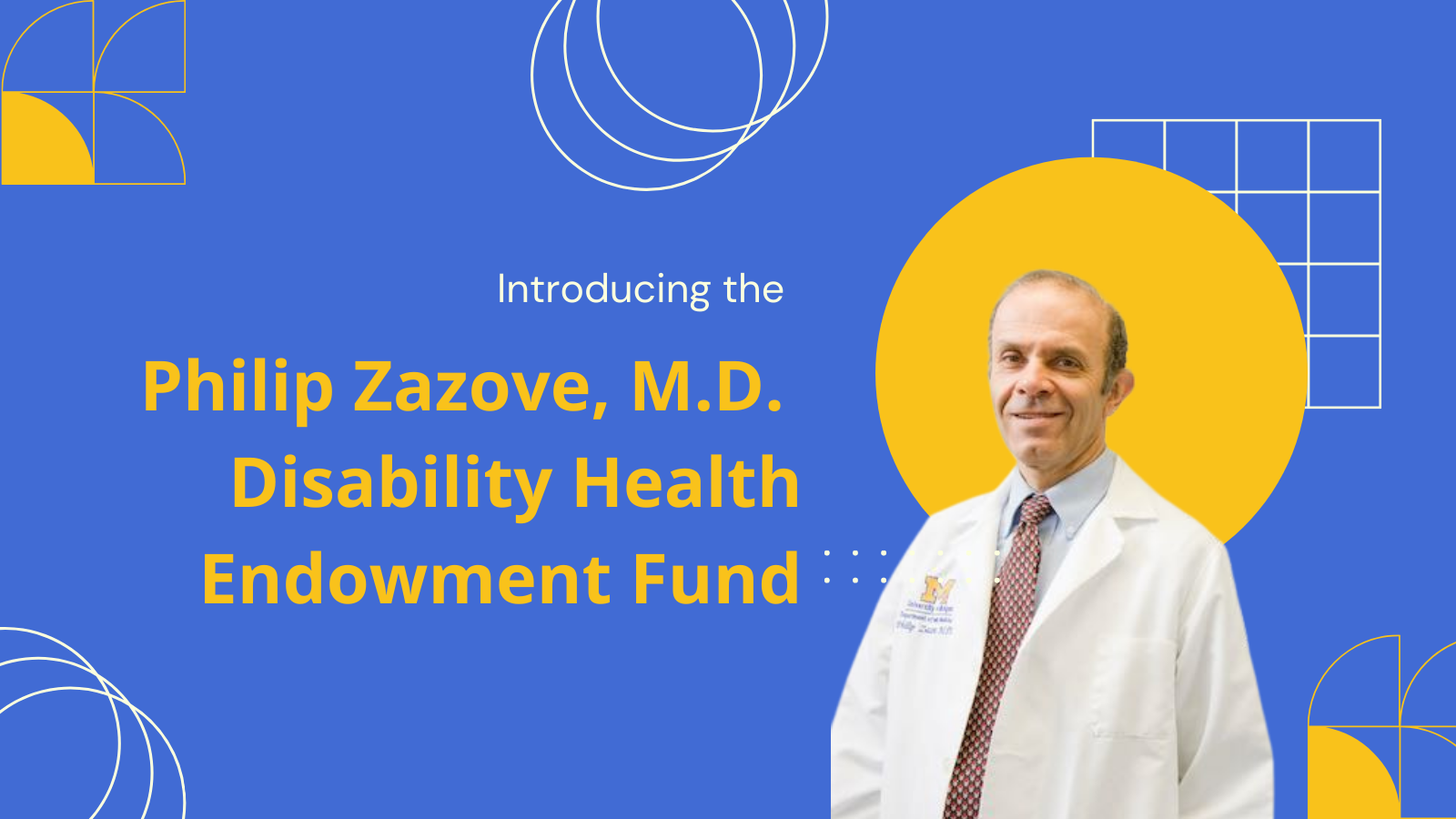
Academy Health will hold its annual research meeting in Seattle, Washington from June 24 to 26, 2018. Members of the department of family medicine will present their researcher at the meeting as well as at a pre-conference convening of the Disability Research Interest Group (DRIG) on Saturday, June 23rd, 2018. The DRIG is composed of health services and policy researchers interested in the coordination, quality improvement, and financing of services, assistive devices, and environmental changes needed for the optimal health and social integration of people in situations of disability. It brings together researchers, policy analysts, persons with disabilities, and educators to increase the impact of good quantitative and qualitative research on disability policy, practice, and professional education in the U.S. and abroad.
Members of DRIG include Michael M. McKee, M.D., M.P.H., assistant professor; Elham Mahmoudi, Ph.D., M.B.A., assistant professor; and Philip Zazove, M.D., professor and the George A. Dean M.D. Chair of Family Medicine. Find the Disability Research Interest Group's pre-conference agenda and catch U-M research in the below presentations at DRIG and the Annual Research Meeting #ARM18:
The Effects of Hearing Aids on Healthcare Cost and Use Among Older Adults with Hearing Loss
Washington State Convention Center - 617
Read more
Research Objective: To evaluate the average treatment effects of hearing aids (HA) on healthcare costs and utilization. Hearing loss (HL) is common among older adults and is associated with poorer health and impeded communication. HA, while helpful in addressing some of the effects of HL, are expensive and are not covered by Medicare.
Study Design: We used an average treatment effect method and applied an inverse propensity score weighting – to adjust for potential selection bias between older adults with and without HA, all of whom reported having substantial HL – to estimate the average treatment effects of HA on healthcare costs and utilization. Main outcomes of interest included: (1) Total healthcare, Medicare, and out-of-pocket spending; (2) any emergency, inpatient, and office visit; (3) number of emergency visits, nights in hospital, and office visits, if any. We adjusted our models for age, sex, race/ethnicity, marital status, any physical limitations, presence of certain chronic conditions, interview language, region of the country, educational level, and federal poverty level. Objective audiometric data is not available in the Medical Expenditure Panel Survey (MEPS) data and, therefore, we could not control for the degree and type of HL.
Population Studied: We used nationally representative 2013-2014 MEPS data to select people age 65 and older who self-reported having HL. Our original sample included 1,360 individuals who responded “Yes” to whether they had substantial difficulty hearing. After excluding individuals with missing values (24 patients – 1.8%), our final sample included 1,336 individuals, 612 of whom used HA and 724 of whom did not.
Principal Findings: Adults without HA were less educated, poorer, and more likely to be from minority subpopulations. The average treatment effects of using HA were (1) higher total annual healthcare spending by $1,125 (CI: $1,114-$1,137) and higher out-of-pocket spending by $325 (CI: $322-$326), but lower Medicare spending by $71 (CI: $-81- $-62); (2) lower probability of any emergency visit by 2 percentage points (PP) (24% vs. 26%; CI: -0.02 - -0.02) (or 8%), lower probability of any hospitalization by 2PP (20% vs. 22%; CI:-0.02 - -0.01) (or 9%), but higher probability of any office visit by 4PP (96% vs. 92%; CI: 0.04-0.04) (or 4%); and (3) 1.40 more office visits (CI:1.39-1.41), but 0.46 fewer nights in the hospital (CI:-0.47- -0.44) (or 5% less), with no effect on the number of emergency visits, if any (CI: 0.01- -0.00).
Conclusions: Our study demonstrates the effects of HA in reducing the probability of any emergency visits and any hospitalizations, and in reducing the number of nights in the hospital. Although use of HA trivially reduced total Medicare costs, it increased total and out-of-pocket healthcare spending.
Implications for Policy or Practice: This information may be useful for the Centers for Medicare and Medicaid in deciding on insurance coverage of HA for older adults with HL. The cost-effectiveness of HA and their impact on reducing adverse health events are important policy-related factors that need to be considered in deciding about coverage of HA by both private and public insurers – including Medicare.
Hearing Health Equity: Social Determinants of Hearing Aid Use
Read more
Research Objective: Hearing loss is the United States’ third most common disability, affecting 17% of the population. Hearing loss remains extensively untreated in the primary care patient population with significant psychosocial impacts. This study examines how social determinants may impact hearing aid use.
Study Design: We conducted an explanatory sequential mixed methods study involving a secondary analysis of a nationally representative data set, the Health and Retirement Study (HRS) (n = 35,572). This was followed up with 1:1 qualitative interviews (n = 21) with a separate community sample to explain our findings. Samples included individuals aged 55 and older with a self-reported hearing loss (described as either fair or poor hearing), either with or without hearing aids. The main outcome measure assessed the proportion of participants with a self-reported hearing loss who use hearing aids.
Population Studied: Subjects included individuals 55 years or older who self-reported a hearing loss, with or without hearing aids.
Principal Findings: Multivariable analysis of data from the HRS indicated that younger, non-white, lower income, and less educated individuals were significantly less likely to use a hearing aid than their referent groups (all p values < .001). Areas of residence (e.g. urban) and health literacy were not associated with hearing aid use. In supplemental analyses splitting the sample into <65 and ≥65 age groups, those with the Veterans Administration (VA)-provided health insurance were more likely to use hearing aids even after controlling for demographic and socioeconomic variables (OR 2.25; p<0.001 and 1.26; p=0.009, respectively for <65 and ≥65 age groups). For all other health insurance types, we found that insurance was not associated with having hearing aids after controlling for demographic and socio-economic covariates. Qualitative analysis revealed barriers to hearing aids included cost, inadequate insurance coverage for hearing aids, and a general low priority by health care providers to address potential hearing loss. Facilitators to obtaining hearing aids included family/friend support, knowledge and adequate insurance coverage for hearing aids.
Conclusions: Many social factors hinder individuals’ ability to obtain hearing aids but this inequity appeared to be mitigated when their insurance plans provided adequate hearing aid coverage and when their family/friends provided encouragement to obtain hearing aids.
Implications for Policy or Practice: Hearing health care, including screening, testing, and hearing aid acquisition, should become a priority for health care institutions and insurers to address the widespread impact of hearing loss. Programs that address existing hearing loss stigma, financial barriers, and health care gaps are very much needed to ensure that hearing health care is available to all who need it.
Pregnancy and Neonatal Outcomes Among Deaf or Hard of Hearing Women
Washington State Convention Center - 617
Read more
Research Objective: To describe pregnancy and neonatal outcomes among deliveries to women who are deaf or hard of hearing (DHH) and compare them to other women using population-based linked birth certificates and fetal death records.
Study Design: We conducted a retrospective cohort study using data from the 1998–2013 Massachusetts Pregnancy to Early Life Longitudinal data system. We identified DHH status by analyzing the primary and secondary diagnoses of any hospital admissions before and during the first delivery. We compared the pregnancy and neonatal outcomes among deliveries to DHH women to randomly selected deliveries to non-DHH women using multivariate Poisson and multinomial logistic regressions, controlling for maternal age, parity, and birth year.
Population Studied: DHH women in Massachusetts who had a delivery in 1998-2013.
Principal Findings: Deliveries to DHH women were associated with an increased risk of adverse pregnancy and neonatal outcomes, including: pre-existing diabetes (RR=2.2, 95% CI: 1.4-3.4, p<0.01), gestational diabetes (RR=1.5, 1.2 - 1.8, p<0.01), pre-eclampsia and eclampsia (RR=1.4, 1.1-1.7, p<0.01), placental abruption (RR=1.8, 1.2-2.9, p<0.01), preterm birth (<37 weeks of gestational age) (RR=1.4, 1.1–1.7, p <0.01), low birth (<2,500g) (RR=1.3, 1.0-1.6, p <0.01) or very low weight (<1,500g) (RR=1.8, 1.2–2.8), and low Apgar 5 score (RR=2.0, 1.3-2.9). Although the risk of cesarean delivery and staying more than four days during cesarean delivery was significantly higher among DHH women (RR=1.1; 95% CI=1.01-1.21, p <0.01, RR=1.6; 95% CI=1.1-2.4, p <0.01 accordingly) in unadjusted analysis, after controlling for age, parity, and birth year, it became non-significant.
Conclusions: DHH women are at heightened risk for adverse pregnancy and neonatal outcomes. These findings underscore the need for a systematic investigation of the pregnancy and neonatal related risks, complications, costs, and outcomes of DHH women.
Implications for Policy or Practice: Findings from this study suggest the need to develop clinical interventions and maternal and child health programs that ensure inclusion and equity for DHH women. In addition, information on pregnancy and maternal health that is accessible to DHH women must be developed and disseminated.
Health and Healthcare Disparities Experienced By Four Diverse Disability Populations
Washington State Convention Center - 611
Read more
Due to the recent recognition that patients with disabilities experience health and healthcare disparities, exploratory research is needed to understand the types and extent of these disparities. The panel will present studies that describe health and healthcare disparities experienced by four diverse disability populations and potential strategies to address them.
Paper: Hearing Loss and Associated Health Conditions
Research Objective: Hearing loss is prevalent, but few studies have investigated its associations with common medical conditions. The objective was to assess the prevalence of medical conditions among individuals with hearing loss, compared to those without hearing loss, in people aged 65 years and older.
Study Design: A cross-sectional study design was used. Three years of National Health Interview Survey (NHIS) data (2011-2013; unweighted n=53,111) were pooled to examine subpopulations of individuals with hearing loss and the presence of health conditions. Comparisons were made between adults aged 65 and older with, and without, self-reported hearing loss. Statistical analysis included descriptive frequencies, Chi-square tests, and multiple logistic regressions. The outcomes of interest included self-reported diagnosis of arthritis, cardiovascular disease, diabetes, high blood pressure, emphysema, stroke, cancer, asthma, multiple chronic conditions, health status, and obesity.
Population Studied: The study population was individuals 65 years and older with a hearing loss.
Principal Findings: Hearing loss prevalence was nearly 37%. After adjusting for sociodemographics, smoking status, and disability, hearing loss was independently associated with the following conditions: arthritis (OR 1.41; 1.27-1.57), cancer (OR 1.35; 1.21-1.5), cardiovascular disease (OR 1.48; 1.33-1.66), diabetes (OR 1.16; 1.03-1.31), emphysema (OR 1.41; 1.14-1.74), high blood pressure (OR 1.29; 1.17-1.43), and stroke (OR 1.39; 1.12-1.66). There was an association with worse health status over the past year (OR 1.5 (1.3-1.73).
Conclusions: Hearing loss among older individuals is independently associated with increased disease burden and poorer self-reported health. Future studies are needed to investigate the mechanistic nature of these associations, and whether improved access to hearing healthcare can reduce the overall health burden among these individuals.
Implications for Policy or Practice: Hearing loss based questions should be included in all public surveillances. Health care professionals and policy makers need to ensure that health care is accessible and equitable for individuals with hearing loss to address the potentially higher health burdens that they struggle against.


